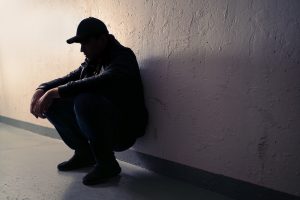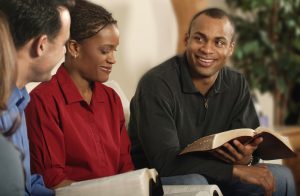Reactive Attachment Disorder, or RAD, pops up when a child’s bond with a caregiver goes off track during key growing-up times, and things end up pretty messy. Kids who’ve experienced neglect, abuse, or a constant shuffle between caregivers often end up with serious struggles in handling emotions and building solid relationships. Researchers are still trying to wrap their heads around RAD—generally speaking, our grasp of it remains in its early stages—and they’re not just focused on what it means now, but also how it might echo into later generations. The diagnosis and treatment options for RAD continue to be a bit fuzzy, which leads to plenty of debate among professionals about what really works. One issue is that its symptoms often resemble those of other behavioral challenges, muddying the waters when trying to nail down a clear diagnosis. Many teachers, for instance, sometimes miss the signs because RAD’s traits blend in with other issues; as a result, these kids might not get the support they badly need. In most cases, catching these signs early can help lessen long-term emotional and social hurdles. There’s a real, pressing need for more research that clears up the confusion and sets up solid strategies to help kids form the healthy bonds they deserve—giving them a fair chance to thrive at home, at school, and pretty much anywhere (Sumpter et al.), (Arnold et al.).
Please also review AIHCP’s numerous behavioral health certifications and see if they match your academic and professional goals.
A. Definition of Reactive Attachment Disorder (RAD)

Reactive Attachment Disorder (RAD) is a tricky mental health condition that crops up mainly in kids who’ve gone through some heavy neglect or abuse during really formative stages. You see, DSM-5 explains it as having a hard time building those solid emotional bonds with caregivers—often the child might pull away or even push back when comfort is offered. In many cases, though, the way we diagnose RAD seems to miss some of these behaviors, leaving a bit of a gap between the textbook description and what actually unfolds in day-to-day life (Owen et al.). Generally speaking, this mismatch has sparked a lively debate about whether our current criteria truly capture the disorder’s varied expressions. Some experts even argue that RAD isn’t just a straightforward attachment issue but rather a syndrome born from early trauma—almost like a mix with posttraumatic stress responses (Richters et al.). All in all, getting a real grip on RAD calls for a careful, nuanced look at how early relationships, with all their messy details, end up leaving lasting marks on a child’s emotional world.
B. Importance of understanding RAD
Reactive Attachment Disorder (RAD) really matters—it’s not just a clinical concern but also a key issue in how our schools support kids. Knowing about RAD helps teachers and mental health folks spot signals that might easily be lumped in with other behavior problems, which in most cases can lead to a misdiagnosis and mean that children don’t get the help they need. There’s still a lot of debate over what kinds of assessments or fixes work best for kids with RAD; this ongoing disagreement shows just how messy the disorder can be and underscores a need for strategies tailored to both therapy and education (Arnold et al.). Also, given that RAD has only recently drawn research attention—with its fuzzy diagnostic clues and clashing theories—there’s clearly a call for more in-depth study and continuous tweaking of treatment methods (Sumpter et al.). By deepening our understanding of RAD, we put ourselves in a better spot to address the unique needs of affected individuals and boost their emotional and academic well-being.
C. Overview of the essay structure
When writing an essay, especially on a tricky issue like reactive attachment disorder, getting your thoughts in order really matters. You might kick things off with a brief intro that names the topic and shows why it holds weight in the wider scene of mental health issues. In most cases, you’ll then jump into some background details—a sort of review of past research that spills out what the disorder is about, its likely causes, and some of its consequences. Sometimes, this background slips into a mix of historical looks at attachment theory and a rundown of how the diagnosis is handled; this part can eventually lead into chatting about treatment choices and their potential outcomes. A final wrap-up pulls these ideas together, reminding us that ongoing inquiry into reactive attachment disorder is crucial. Overall, a well-organized essay isn’t just a checklist—it helps break down tough topics, as seen in the in-depth evaluations provided by recent studies (Campanale C et al., p. 1212-1212) and (Ruei‐Lu M et al.).
II. Causes of Reactive Attachment Disorder
The development of Reactive Attachment Disorder (RAD) is primarily influenced by early adverse experiences that disrupt the formation of healthy attachments between a child and their primary caregivers. Key causes include severe neglect, abuse, or abrupt changes in caregivers, all of which significantly hinder the child’s ability to establish trust and security in relationships that are fundamental to emotional health. Children exposed to such traumatic environments often display significant emotional and behavioral difficulties, which further impact their capacity to engage socially and emotionally with others throughout their lives. These difficulties can manifest in various ways, including difficulty in forming friendships and maintaining relationships as they may struggle to trust others due to their early experiences. The long-term consequences of these adverse experiences can result in maladaptive behaviors, including anxiety and aggression, as well as difficulties in emotional regulation, meaning these children may find it hard to control their emotional responses to situations. Additionally, it is important to consider the role of both biological factors and attachment styles cultivated in early interactions, as some studies highlight that children with traumatic histories frequently exhibit disrupted attachment patterns. These disrupted attachment patterns underscore the depth of impact that early experiences have on emotional development, which can create a cycle of relational difficulties that persist into adulthood, making effective intervention and support crucial for these individuals (R Ahmad), (Lauren E Nielsen).
A. Early childhood neglect and abuse
Early childhood neglect and abuse can leave a deep mark, shaping a person’s mental growth in ways that aren’t always obvious at first—this is especially true when we talk about reactive attachment disorder (RAD). When secure connections don’t really form because of these early struggles, a whole mix of emotional and behavior issues tends to crop up. In many cases, studies suggest that kids dealing with such hardships are more likely to end up with a range of behavioral problems, which then often makes RAD symptoms—like trouble handling emotions and building healthy relationships—even more pronounced (Majebi NL et al.). Even later on, these early wounds can echo well into adulthood; adults who once faced RAD might find themselves wrestling with serious challenges, from bouts of depression and substance misuse to legal troubles. One research project tracking adults diagnosed with RAD back in their childhood revealed some pretty striking mental health outcomes, really underlining how those early attachment problems can steer life in unexpected directions (Hannah K Betcher et al.). All in all, tackling early neglect and abuse is essential if we’re going to ease the long-term impact of RAD.
B. Inconsistent caregiving and attachment disruptions
Erratic care really messes with how kids bond—a big factor when we try to figure out reactive attachment disorder (RAD). Kids who don’t get steady or enough emotional support often stumble when trying to build secure bonds, and that then messes up their ability to manage feelings and connect socially. A shaky caregiving setup can spark feelings of insecurity and unpredictability, which in turn might slow down the growth of key brain circuits—areas like the hippocampus and prefrontal cortex (Sara B Johnson et al.). In many cases, this inconsistent support may even mix with a child’s natural traits, bumping up the risk for psychological struggles, as seen in neuroendocrine quirks linked to early maltreatment (McCrory E et al., p. 1079-1095). All in all, these bonding issues not only block a child’s chance at forming healthy relationships but can also trigger long-term developmental bumps, showing just how crucial steady, warm care is early on.
C. Environmental factors and socio-economic influences
Reactive attachment disorder shows up best when you really dig into how a childs’ surroundings and family finances shape who they become. Research generally hints that our mental state is molded not just by what we inherit, but also by our day-to-day environment and socio-economic footing (cite15). Sometimes, kids growing up in less stable, rougher neighborhoods end up facing a mix of stress, shaky schooling, and other challenges that make bonding tough. You can also see that the overall vibe of a community—its local hangout spots and cultural support—plays a big role in how youngsters handle emotions and social cues (cite16). All in all, figuring out how these overlapping bits work together is key to grasping the messy nature of reactive attachment disorder and finding ways to help vulnerable kids build real, lasting connections.
III. Symptoms and Diagnosis of Reactive Attachment Disorder

The symptoms and diagnosis of Reactive Attachment Disorder (RAD) present significant challenges for mental health professionals, requiring a nuanced understanding of the condition. Characterized by severe disturbances in social functioning, children with RAD often exhibit a range of behavioral issues that complicate their interactions with caregivers and peers. These children may display disorganized attachment patterns and show marked difficulties in forming healthy relationships, which can have long-lasting effects on their emotional and social development. Research highlights that these children typically demonstrate poorer cognitive and language abilities compared to their peers, often falling below population norms in IQ assessments (Davidson et al.). Furthermore, the implications of their developmental delays can be profound, leading to academic struggles and problems with social integration as they grow older. Moreover, a history of maltreatment seems to correlate strongly with increased instances of insecure attachment patterns; in a recent study, children diagnosed with RAD were found to have a relative risk of 2.4 for developing insecure attachments compared to their counterparts without a clear history of maltreatment (Action AO. et al.). This correlation emphasizes the importance of early intervention and understanding the backgrounds of affected children. The complex interplay of symptoms necessitates comprehensive diagnostic criteria, which include detailed assessments of the child’s social environment and past experiences, to effectively address the multifaceted nature of RAD. Ultimately, this thorough understanding is essential for informing effective therapeutic interventions, allowing for tailored approaches that cater to the specific needs of each child while fostering healthier attachment behaviors.
A. Emotional and behavioral symptoms
Knowing the signs of Reactive Attachment Disorder (RAD) is really important if we want to help these kids. Often, kids with RAD seem overwhelmed by their feelings – they struggle to form connections, show higher anxiety levels, and sometimes don’t trust the very people who’re meant to care for them; these issues usually trace back to early hardships like neglect or even abuse. It’s not just about trouble bonding—these inner struggles can sneak into behavior that might be mistaken as simple defiance or opposition by teachers and caregivers. In many cases, the signs blend with other behavioral issues, which generally makes an accurate diagnosis a real headache; some discussions about the DSM-5 (Owen et al.) even hint that the current criteria might leave too much to be desired. All in all, since unclear signs can block the timely support these children need, it becomes increasingly crucial to get a real handle on RAD—so that their emotional needs are met in schools and other settings (Arnold et al.).
B. Diagnostic criteria according to DSM-5
Knowing the DSM-5 criteria for Reactive Attachment Disorder (RAD) is crucial if clinicians want to nail a proper diagnosis and set up effective treatment. The DSM-5 actually puts RAD under Trauma- and Stressor-Related Disorders, which really shows how early relational struggles can mess with a childs’ emotional and social well-being. Kids with RAD often keep to themselves, staying emotionally withdrawn from adult caregivers and rarely reaching out for comfort when things get tough. Quite frankly, differences among various evaluation tools reveal just how tricky it can be to lock down a solid diagnosis. For instance, the RAD and DSED assessment interview (RADA) was tweaked to mesh with DSM-5 guidelines and ends up demonstrating a pretty robust way of sorting symptoms for both RAD and its related condition, Disinhibited Social Engagement Disorder (DSED) (Archambault M et al., p. 10731911241276625). In most cases, following DSM-5 guidlines gives practitioners a more complete approach to spotting and treating RAD effectively (Treml J et al.).
C. Challenges in diagnosing RAD in children
Diagnosing Reactive Attachment Disorder in kids can be a real challenge—largely because the symptoms tend to overlap with other behavior issues in ways that just don’t follow a neat pattern. Many children show a mix of problematic actions that don’t perfectly match what one might expect for RAD, which often leads to misdiagnoses or delays in spotting the disorder. Sometimes, teachers and caregivers chalk these behaviors up to simple disinterest rather than recognizing that they might signal a deeper attachment problem (Arnold et al.). Then again, cultural differences in parenting along with varied socio-economic contexts further muddle the picture; in many cases, research suggests that kids in low and middle income settings face higher risks due to tougher caregiving environments (Bhana A et al.). All in all, this just goes to show that evaluations need to look at both what’s visible and the broader context to nail down the right diagnosis and get help in on time.
IV. Treatment and Intervention Strategies
Reactive Attachment Disorder (RAD) isn’t fixed by one neat solution—it calls for mixing a bunch of different approaches. First off, building a safe, warm space where trust and real comfort can grow is key; this space really helps a child feel secure. It isn’t only about individual therapy either—often, involving caregivers so they can learn what the kid really needs and boost everyday connections is just as important. In many cases, experts lean on ideas from trauma-informed care since these kids sometimes show signs from past neglect or abuse that end up looking a lot like PTSD symptoms (Owen et al.). You might also notice that difficulties in school pop up, with behaviors causing enough confusion among teachers to make things even trickier (Arnold et al.). All in all, blending emotional support, gradual changes in behavior, and active caregiver involvement ends up building a support network that covers all the bases for the child’s recovery.
A. Therapeutic approaches for children with RAD
Kids with Reactive Attachment Disorder demand attention from several angles. A neat method many find helpful is Dyadic Developmental Psychotherapy (DDP), a way to tackle the emotional and connection issues these kids often face. Generally speaking, studies show that DDP works by building a kind of safe, caring bond between the caregiver and the child, which helps the kid sort through old hurts (Boyd et al.). Meanwhile, schools are stepping in too—customized educational strategies might boost academic results. Often, teachers have a tough time since RAD’s symptoms sometimes mix up with other behavior problems, occasionally leading to misreads of what’s really going on (Arnold et al.). So, putting therapy right into classroom settings can ease emotional struggles while also making it easier for children to connect with their schoolwork. In most cases, getting mental health experts and educators to team up seems to be the best way forward.
B. Role of caregivers and family in treatment
Parents and caregivers really form the backbone of healing when it comes to Reactive Attachment Disorder (RAD). They set up an environment where trust can slowly grow, a key ingredient that starts with simple care. Kids with RAD often seem scared to get close—carrying a deep, lingering mistrust from early bouts of neglect or abuse—which can really shake up how they act around family members (Owen et al.). It’s crucial that those caring for them stick to a steady, nurturing routine that builds a safe space for forming real, secure bonds. Caregivers also step in with practical, everyday therapy techniques that nudge out harmful behaviors and spark healthier interactions (Arnold et al.). In the end, this kind of approach not only helps a child unravel a tangle of emotions, it also guides families into creating a supportive, sometimes imperfect, network that leads toward better, more balanced relationships.
C. Importance of early intervention and support
Early support for Reactive Attachment Disorder (RAD) can really change a child’s life. Quick, practical actions often help kids turn things around developmentally. Generally speaking, studies suggest that RAD tends to root back in early trauma—when children don’t get enough care, they start to build deep mistrust and show behaviors that sometimes resemble PTSD symptoms (Owen et al.). In many schools, these kids end up being misunderstood; teachers might see their struggles as simple defiance or a lack of willingness to learn, and that misreading just makes matters worse (Arnold et al.). Bringing caregivers and teachers together, even in a slightly messy system, helps create a feeling of safety and strengthen bonds. In most cases, early programs that guide both parents and educators to notice and tackle the signs of RAD really give these vulnerable children the support they need to flourish.
V. Conclusion

In conclusion, the investigation into reactive attachment disorder (RAD) reveals the complexities associated with its diagnosis and assessment, highlighting the critical need for reliable evaluative tools in the field. This need is underscored by the existing literature, which emphasizes the inadequacies of current methodologies. As noted by various researchers, there is a limited number of empirically validated instruments available for assessing both RAD and disinhibited social engagement disorder (DSED). One significant development in this sphere is the RAD and DSED assessment interview (RADA), which has been thoughtfully updated to align with the latest DSM-5 criteria. This updated version demonstrates a promising four-factor structure that accurately reflects the diagnostic requirements for these disorders, as indicated in relevant studies (Archambault M et al., p. 10731911241276625). However, the analysis conducted under the COSMIN protocol raises important concerns, revealing that while many assessment tools show satisfactory internal consistency and structural validity, they require further evaluation to adequately address their cross-cultural validity and overall responsiveness in various populations (Talm Fón-Knuser et al.). Consequently, advancing diagnostic accuracy and optimizing therapeutic interventions for individuals affected by RAD relies heavily on the refinement of these assessment instruments and the ongoing commitment to comprehensive research efforts. This collective endeavor is crucial not only for enhancing the understanding of RAD and DSED but also for ensuring that practitioners have access to effective tools that can lead to timely and appropriate interventions for those in need.
A. Summary of key points discussed
When you dig into reactive attachment disorder (RAD), you quickly notice a mix of intriguing details that hint at its many layers and unexpected impacts on people’s lives; it’s a lot more than a simple label. One striking point is that folks with RAD often come off as emotionally shut down around their caregivers, usually because they didn’t get the care they needed during those early, formative years. In most cases, getting help early—jumping in with the right thrapeutic support—can really change how their emotions and behavior evolve. There’s also the twist that RAD tends to show up alongside other challenges like anxiety and depression, so having a full picture is pretty essential for picking the right treatment. It’s not just about what you see on the surface—the role of bioligical and environmental factors only muddies the waters more, pointing to the need for further research to untangle these complicated ties. And as more studies roll in, blending insights from different research efforts keeps shaping how clinicians work and helps guide preventive steps for those at risk (Shi R et al.), (Chow BJ et al., p. 1-5).
B. The impact of RAD on individuals and families
Reactive Attachment Disorder’s impact goes well beyond the individual—it seeps into families and the quality of all relationships. Often, families find themselves under a lot of pressure and, quite frankly, some confusion as they try to deal with RAD’s challenges, which generally show up as trouble managing emotions, building trust, and interacting socially among kids. These issues can seriously disrupt secure connections, leaving many caregivers feeling overwhelmed and not quite ready to offer the kind of nurturing support needed for recovery. In most cases, using trauma-informed care—focusing on keeping relationships safe, stable, and caring, as noted in (James H Duffee et al.)—plays an essential role in softening the harsh impacts of early childhood trauma. This approach not only builds resilience in the child but also strengthens the whole family, creating a kind of mutual, if sometimes imperfect, support network for everyone caught up in RAD. So, figuring out and addressing RAD really calls for a broad, family-first plan that puts relationship health front and center, helping both children and their families find a way to heal and adapt (Galluzzi L et al., p. 486-541).
C. Future directions for research and awareness
Reactive Attachment Disorder research is moving forward, so it’s time we get a better grip on what counts as a diagnosis and build some uniform check methods for early help. In most cases, things get messy—diagnostic confusion mixed with clashing theories—which means a deep, somewhat loose meta-review is needed to pull together what we know (Sumpter et al.). That basic groundwork generally paves the way for future work on how well treatments work and the differences between therapy methods. It’s also worth taking a hard look at fresh ideas like Buddhist-derived interventions (BDIs) when dealing with attachment issues. As these new approaches gain a bit more traction in mental health circles, it becomes really important (though not always clear-cut) to guard against any misuse of their core ideas so that the care stays both ethical and effective (Griffiths et al.). Bringing together clinicians, researchers, and practitioners—a sort of cross-field chat, if you will—can spark a broader awareness and help cook up strategies that, even if imperfect, improve outcomes for individuals and their families.
References:
- Bhana A., Cluver L., Gleason M. M., Helen Minnis, Kieling C., Mark Tomlinson, Meltzer H., et al.. “Risk factors for vulnerable youth in urban townships in South Africa: the potential contribution of reactive attachment disorder”. ‘Informa UK Limited’, 2012, https://core.ac.uk/download/9651400.pdf
- Arnold, Shawn Travis. “Teaching Children with Reactive Attachment Disorder: A Review of the Literature”. University of Alaska Southeast, 2009, https://core.ac.uk/download/162576533.pdf
- Sumpter, Johnathan M. “RESEARCH EXCHANGE. Reactive Attachment Disorder: Developing a Developmental Perspective”. e-Publications@Marquette, 2011, https://core.ac.uk/download/67751286.pdf
- Griffiths, MD, Shonin, E, Van Gordon, W. “The emerging role of Buddhism in clinical psychology: Toward effective integration.”. ‘American Psychological Association (APA)’, 2014, https://core.ac.uk/download/30650561.pdf
- Owen, Christy. “PTSD from Childhood Trauma as a Precursor to Attachment Issues”. Scholars Crossing, 2016, https://core.ac.uk/download/129592830.pdf
- Nkoyo Lynn Majebi, Mojeed Omotayo Adelodun, Evangel Chinyere Anyanwu. “Early childhood trauma and behavioral disorders: The role of healthcare access in breaking the cycle”. Comprehensive Research and Reviews in Science and Technology, 2024, https://www.semanticscholar.org/paper/d3d1e26952b5607aad412eb4764bfe71b3f6dc9e
- Hannah K. Betcher, Tanner J. Bommersbach, Bruno A. Perossa, Beth Larrabee, P. Croarkin, M. Romanowicz, J. V. Vande Voort, et al.. “Adult Outcomes of Children With Reactive Attachment Disorder in a Non-Institutionalized Sample.”. The Journal of clinical psychiatry, 2023, https://www.semanticscholar.org/paper/c5b5d0bb905d4a3e15d2f4834e39e72e61c79f9f
- Sara B. Johnson, Jenna L. Riis, Kimberly G. Noble. “State of the Art Review: Poverty and the Developing Brain”. PEDIATRICS, 2016, https://doi.org/10.1542/peds.2015-3075


















